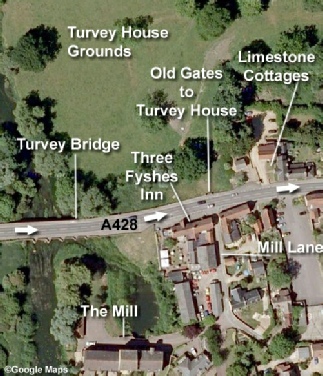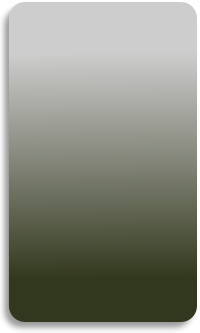


©2015 Deborah Richardson





Privacy Policy
Copyright




We begin by crossing Turvey Bridge from Lavendon. This is the oldest crossing of the Ouse in Bedfordshire.
The earliest known bridge here dates from the 1130s. The current seventeenth century, grey, stone one was widened for traffic in 1935.
The border between the counties of Buckinghamshire and Bedfordshire is on this bridge.
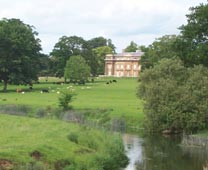
As you enter Turvey over the bridge you can see Turvey House on your left, across the field. (photo left) There is more information on this lovely building on its own page.
This is a little 4 part 'virtual' tour of the village.
Any words that are underlined are links to pages with more information on that subject. Many buildings have their own pages on this site.
For some of the pictures, if you click on them you will see an enlarged version (I am adding this to all pictures as soon as possible)
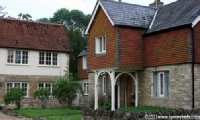
Turvey Village - Virtual Tour
Looking to your right you may catch sight of this statue in the river before the Mill. This chap is locally known as Jonah. The statue was brought to Turvey from Ashridge House, Herts. and erected here on 15 April 1844 by John Higgens of Turvey Abbey.
Jonah once stood in the water but modern developments mean he now has dry feet!
Another statue is known as Jonah's wife, but is in fact also of a man! There are more details of them both on the Jonah page.
The old flour mill is is by the bridge. It has had a chequered history including being rebuilt after a terrible fire in 1885. It has recently been redeveloped and is now flats and ‘houses’. It was once a Crisp (potato chip) Factory making Cristo Crisps (1953-
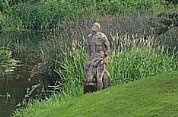
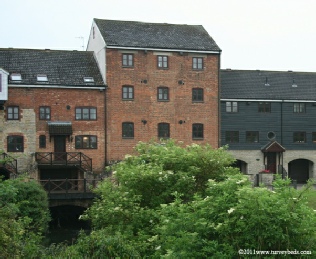
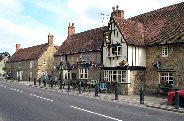
The Three Fyshes public house (built 1622) is on your right as you enter Turvey from the west. This ancient building has a 'floodometer' on the wall which shows record flood heights over the years. There was a bad flood in 1947 following 6 weeks of snow. There are stone marking the heights of two such floods.
There is more on The Fyshes on its own page.
A legend has it that one of Guy Fawkes' colleagues was captured in The Three Fyshes inn in 1602 by the King's soldiers.
The Gunpowder Plot had been hatched at nearby Weston Underwood.
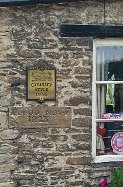
There is more on the Turvey Floods on their own page...
Here are two of the delightful limestone cottages which are almost opposite the Three Fyshes (photo left). They have a spring running through the garden which unfortunately is also prone to flooding. Note the hanging tiles on the wall of the right hand cottage's upper storey. The cottage is dated 1884 with the initials of TCH -
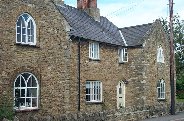
Further on, to your left, more spring-
Follow the route on the maps.
Click the map to enlarge it.
